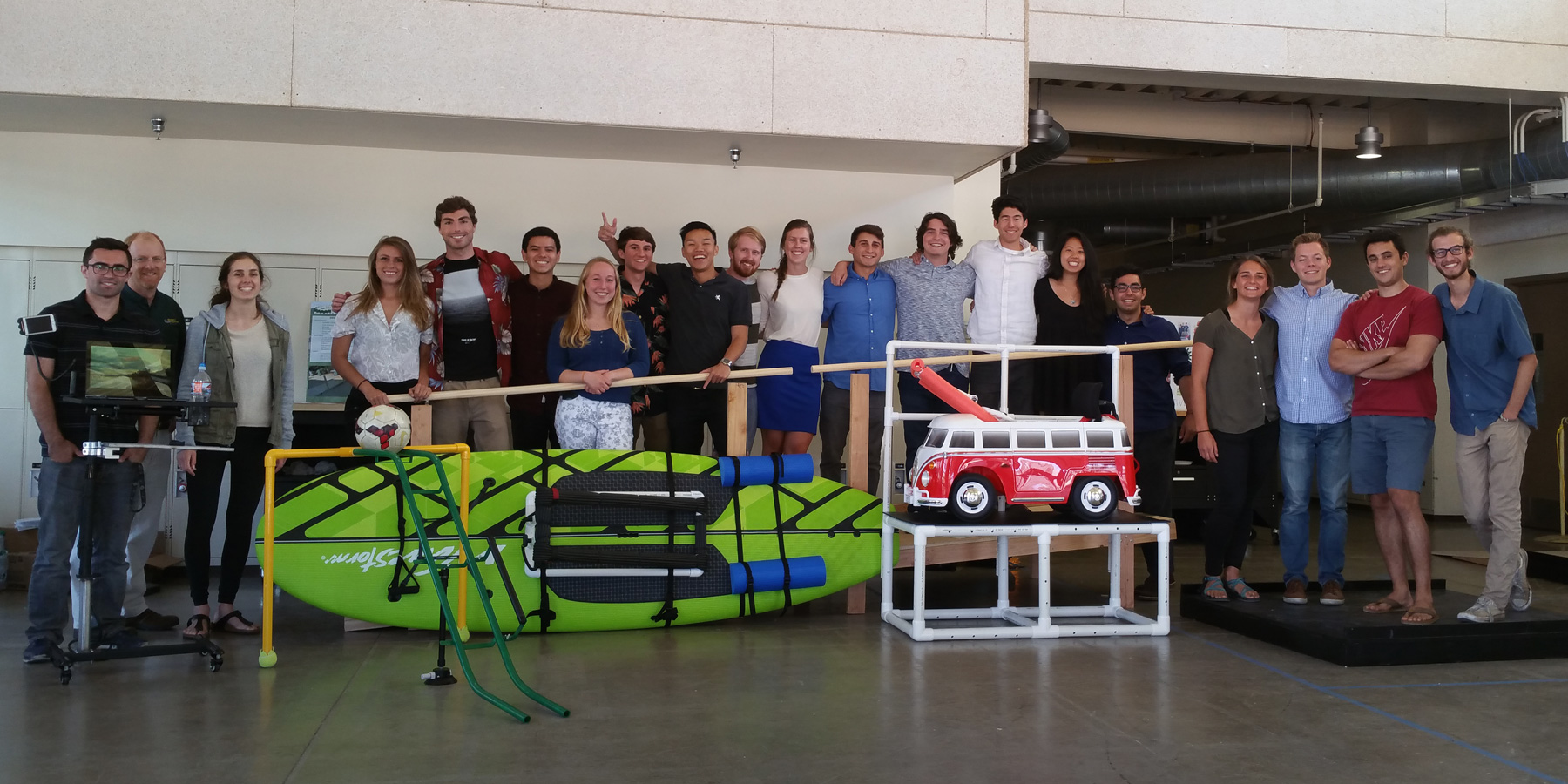
On the Same Team
Cal Poly San Luis Obispo senior projects get everyone in the game.
“I really like sitting down with students and helping them understand how engineering can help humanity, one person at a time."
—Sarah Harding, mechanical engineering lecturer, Cal Poly San Luis Obispo
As a young boy, Joseph Cornelius's spastic quadriplegia (a subset of cerebral palsy) caused him to experience 50 to 75 seizures a day. They'd be triggered by sounds such as a knock at the door, a phone ringing or a child playing. Even venturing outside was almost impossible since the sun, wind, cars and truck noises would lead to a seizure.
But with the help of
California Polytechnic State University, San Luis Obispo, the 26-year-old is now taking part in triathlons with his father, John. “Words cannot express what Cal Poly has done for us, how it has changed our lives," John says.
In 2014, Cal Poly San Luis Obispo approached Michael Lara, regional sports manager of the Special Olympics, to see if he knew anyone who could benefit from one of the university's senior projects. “Michael gave them our names," John says. Fast-forward six years and Team Joseph (which is sometimes just the two of them and other times a group of 20-plus) has participated in more than 250 events, including 5Ks, 10Ks, half-marathons, full marathons and triathlons.
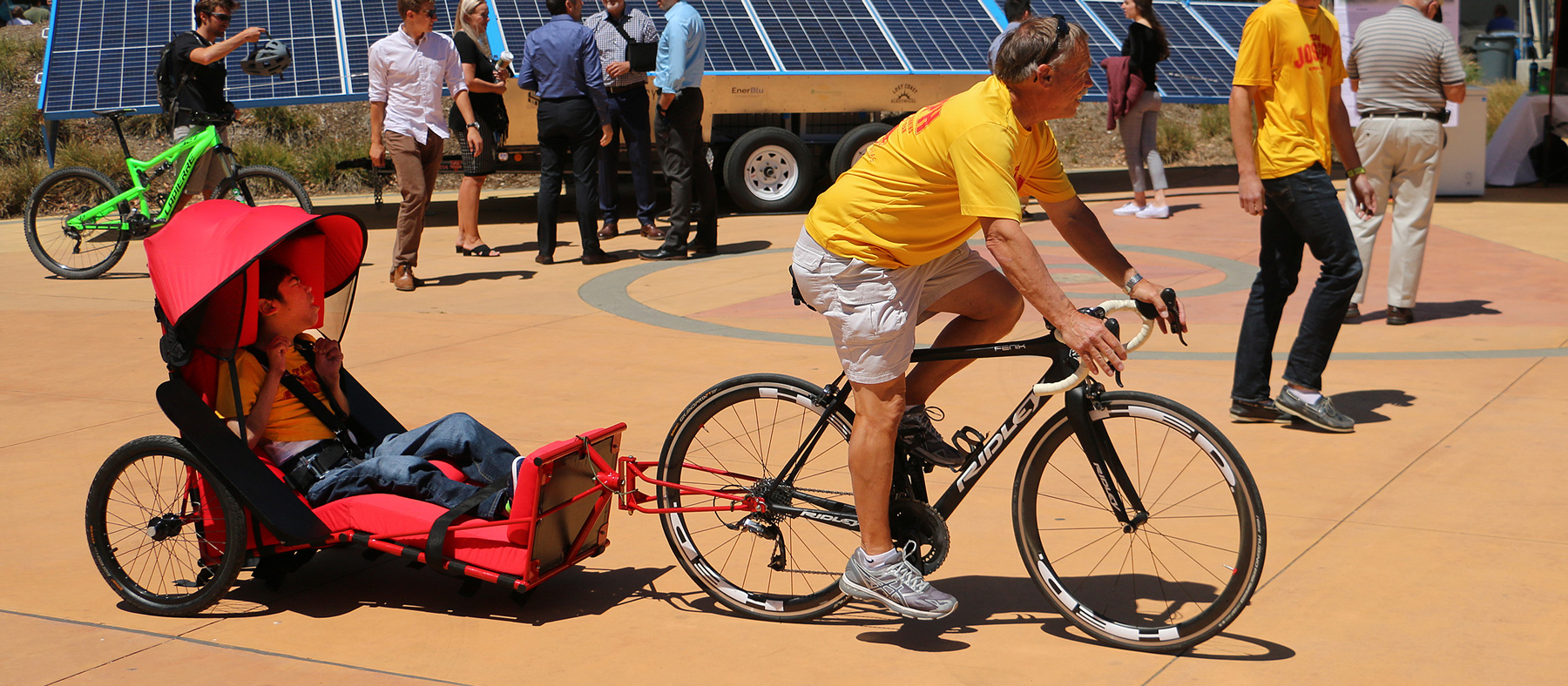
John (right) and Joseph show off the bike trailer designed and constructed by Cal Poly San Luis Obispo students.
ACTIVITY FOR ALL
Senior projects like Team Joseph are now commonplace at Cal Poly San Luis Obispo. But all great ideas have a starting point. When he first came to Cal Poly in 2006, Brian Self, Ph.D., professor of mechanical engineering, connected with Kevin Taylor, Ph.D., director of the School of Education and founder of
The Friday Club, a kinesiology lab that pairs students with Special Olympics athletes.
“They didn't have all the equipment they wanted or needed, so we wrote an NSF grant and got funding," Dr. Self explains. “That grant funded probably 100 different senior projects in computer engineering and mechanical engineering. And then I just got more and more interested in it." In 2017, Self started teaching a rehabilitation engineering course.
Self and mechanical engineering lecturer Sarah Harding both serve as senior project advisors; approximately 25 percent of projects involve people with disabilities.
“Years ago, a student asked me, 'What kind of senior project should I pick?'" recalls Harding. “I said, 'You should pick one that helps an individual. You can go to Space X and engineer rockets for the rest of your life, but the chances of you engineering a product to help an eight-year-old learn to walk are probably almost zero.' Those just aren't the engineering jobs people take to pay the bills."
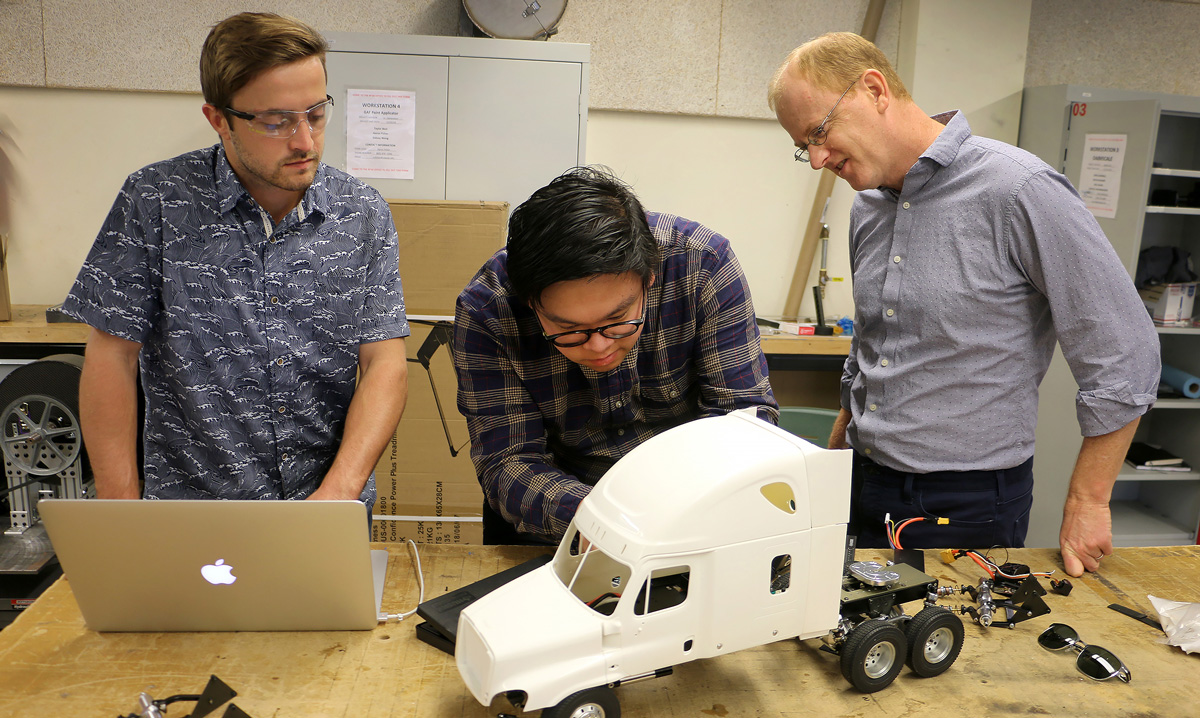
Dr. Self (far right) oversees students working on their senior projects.
LIFELONG LESSONS
The benefits students gain from working on projects for people with disabilities are twofold. First, they develop a heightened sense of empathy. “The families are grateful that their child can walk down a hallway with an assistance device," Harding says. “That's a great lesson for these 22-year-olds. It puts life in perspective."
And second, the experience simply makes them better engineers. “When students work with somebody with a disability, they have to pay attention to how people reach for things, how they move in an environment, how they interact with a mechanical device," she continues. "They learn to really pay attention to the human being and engineering. Those lessons can be lifelong."
Projects have included:
- A power wheelchair that allowed a child to lie down
- An inclusive lectern that goes up and down
- An adapted desk for a graduate student
- A bowling apparatus for the Special Olympics
- A ramp for equestrian riders in wheelchairs
- An adapted surfboard
- A platform for aquatic therapy
- An award podium for the Special Olympics
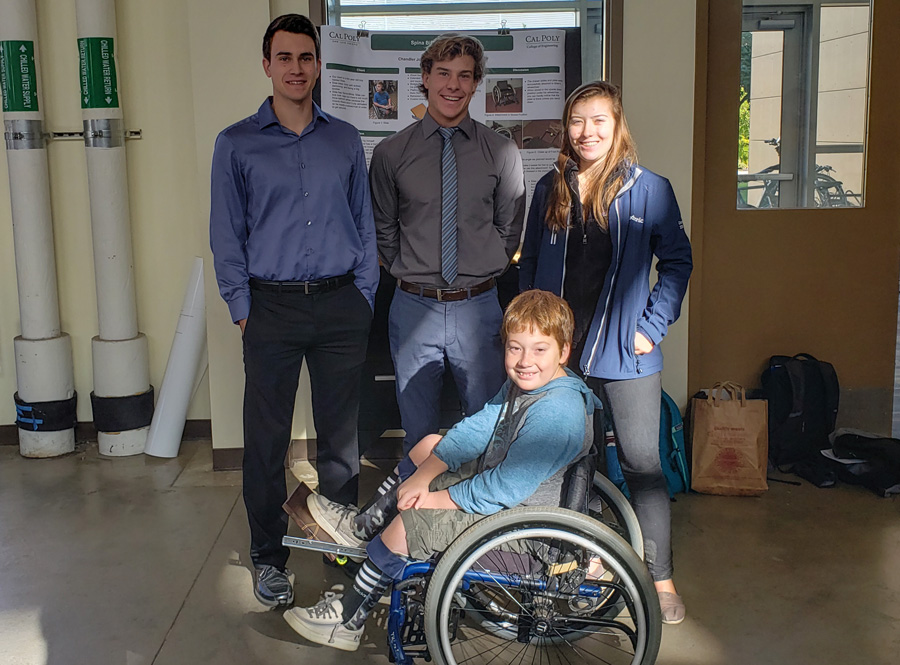
A dressing aid was built to help Silas (front) get his shoes and pants on every morning.
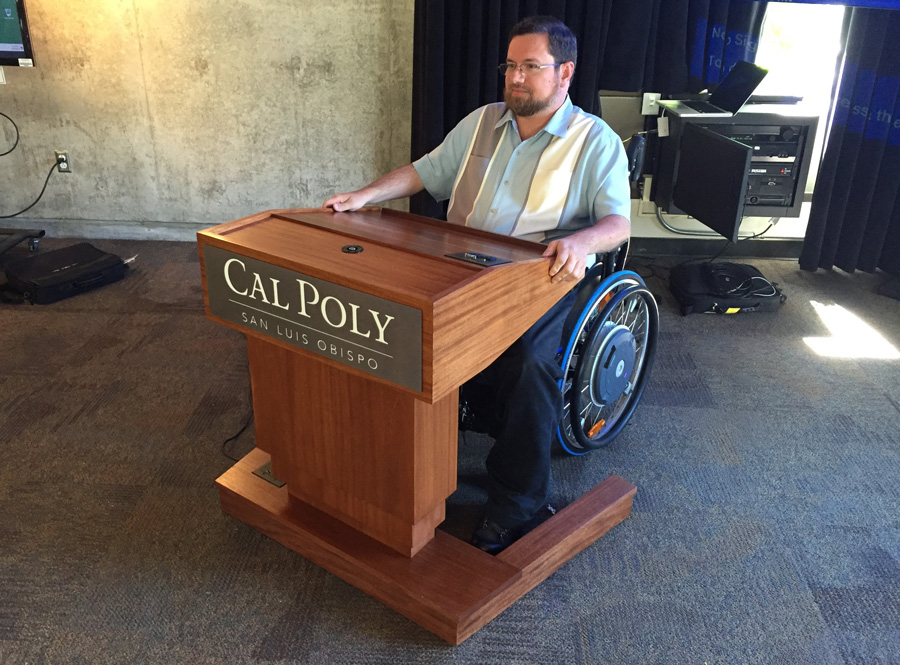
John Lee, an assistive technology specialist at Cal Poly San Luis Obispo, is pictured at an inclusive lectern that moves up and down to adjust to the speaker's height.
“The students would go meet these folks," Self says. “It's not just about building these things; it was also about having interactions with the people with disabilities. It makes them better citizens in the end because they start to recognize inequities and can be better advocates in their community or in their workplace."
And that brings us back to Joseph.
TEAM JOSEPH
In time, Joseph's system got better and better. John started taking him on walks, then faster walks, then short jogs. “He showed me he wanted to do more and more," John says. “And now with Cal Poly's help, he can do anything. I told him that if he dreams it, we'll do it. Have we made up for lost time! Joseph is living life now."
First came the aquatic flotation device called the Aquabullet, which was a challenge since Joseph has no ability to swim. “Their goal was to safely create this device so Joe had the actual experience of swimming. He's almost completely in the water and we are tethered to him and pull him from the front," John explains. “It works unbelievably."
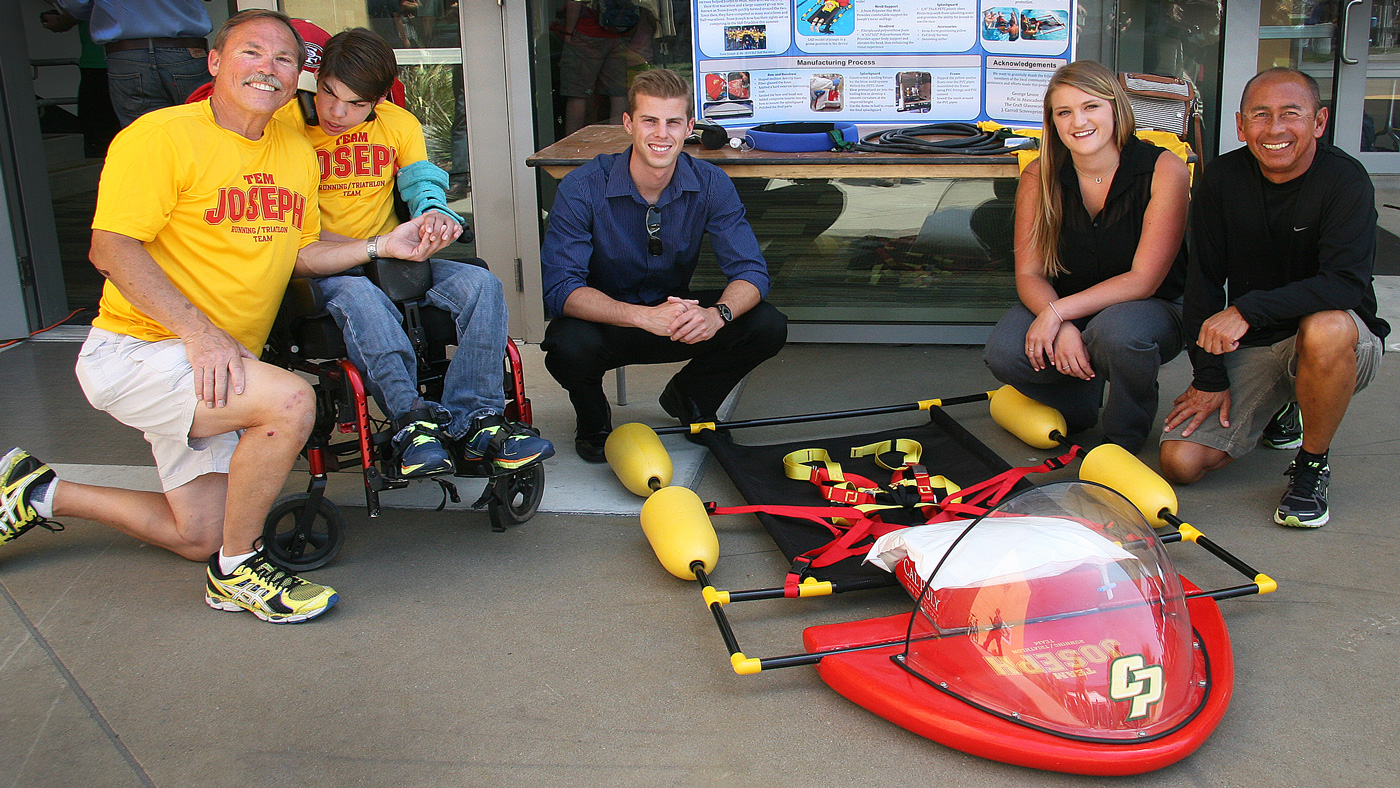
The Aquabullet allows Team Joseph to compete in the swimming portion of triathlons.
For Joseph's jogger, students had to make a custom foot plate where the feet were separated about three inches because his legs are different lengths. “They created a jogger with so much padding, it's comfortable and safe for Joseph," John says. “We run over a thousand miles a year. I think it's Joseph's favorite; he
loves to run."
To round out Team Joseph's triathlon needs, students created a bike trailer, which took into consideration safety at cycling speeds.
“At these races, I see in him something I don't see from him anywhere else," John says. “I see in his eyes and in his smile from ear to ear that he knows he's done something very special—and that means the world to him. Seeing that and being part of that means the world to me. My son is now able to live a life we never dreamed would ever happen."
Story: Michelle McCarthy
photoGRAPHY: PATRICK RECORD
Share this story